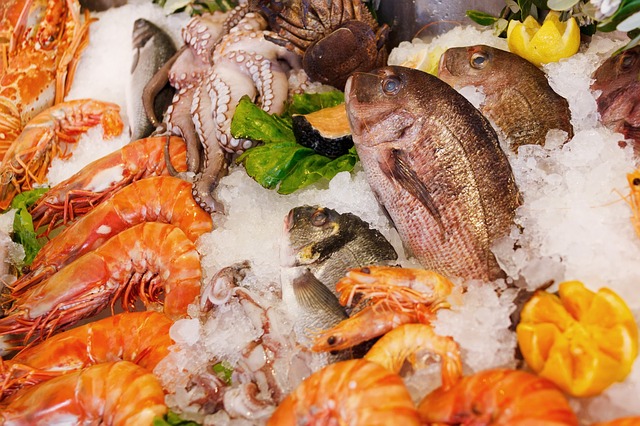
PACIFIC ISLANDER FOODS

PACIFIC ISLANDER FOODS
Fish and other seafoods are abundant in the Pacific Islander diet. They are almost eaten every day in the island countries throughout the Pacific. Most fish and seafoods are stewed or roasted and some are marinated and uncooked. Fish are typically eaten raw, poached or grilled.
The cuisine may vary slightly from island to island and in recent times may be blended with European or American influence. The Pacific Island region is racially and culturally diverse. Therefore, it is common to see fusion cuisine with Indian, Chinese and Japanese influence.
BENEFITS
Traditional Pacific Islander foods are rich with nutrients and meals are prepared in healthy ways. They are high in fibre and the low-fat nature of Pacific Islander diets reduces the risk of heart disease, hypertension, stroke, diabetes and certain types of cancer. Pacific Islander foods are whole foods that is found in nature and prepared without excess cooking and oils. Therefore, it provides more of the recommended daily amounts of many vitamins and minerals. The fresh fruit that are consumed are abundant in nutrients and flavour providing optimum benefits to your body. Fresh fruits, fruit juices, vegetables and nuts such as peanuts, macadamia are eaten in abundance. Fresh fruits also include bananas, plantains, mangoes, papayas, and pineapples.
PRECAUTION
Whole milk and dairy products are consumed in lesser quantities thus there is a high prevalence of lactose intolerance among Pacific Islanders. Coconuts are plentiful therefore both freshly made coconut cream or milk and dried fruit is used to flavour foods.
CEREMONIAL FOOD
Pacific Islanders are known for their love of enormous feasts. They hold feasts to celebrate saints’ days, births, marriages, and local events such as the crowning of a new chief. There are also funeral feasts.
Most Pacific Islanders are Christians and celebrate the major Christian holidays, including Christmas and Easter. Roast pig is a popular dish for Christmas dinner.
Pigs, chicken and cows are other source of proteins that are commonly consumed for large celebrations and feasts. Pork is the most common meat that is used for ceremonial feasts. Whole pigs are often cooked in in pits layered with coals and hot rocks. The main meals are served with abundance of roots crops such as cassava, taro and yams.
TRADITIONAL COOKING
Starchy foods are the foundation of the traditional Pacific Islander diet. The source of starch in the diet comes from root vegetables and starch fruit such as breadfruit, green bananas, taro, yams and cooked greens of the starchy vegetables. Sweet potatoes and coco-yams are also a central to Pacific Islander diet.
Many meals are cooked in coconut milk. The tradition meals include boiled taro, breadfruit, green bananas, fish or pork. Pacific Islander foods are highly seasoned with fresh ginger, lime or lemon juice, garlic, onions or spring onions. Coconut oil or lard are the most common fats used in cooking and give foods a distinctive flavour. Furthermore, more than 40 varieties of seaweed are eaten, either as a vegetable or a condiment.
MODERN FOODS
The modern world see Westerners introduce corned beef, spam, corned meat loaf and Chinese introduction to instant noodles. Pacific Islanders have embraced these foods and it has become almost a staple. Pacific corned beef is rapidly become replacement to fresh beef. This is for meals and ceremonial purposes.

